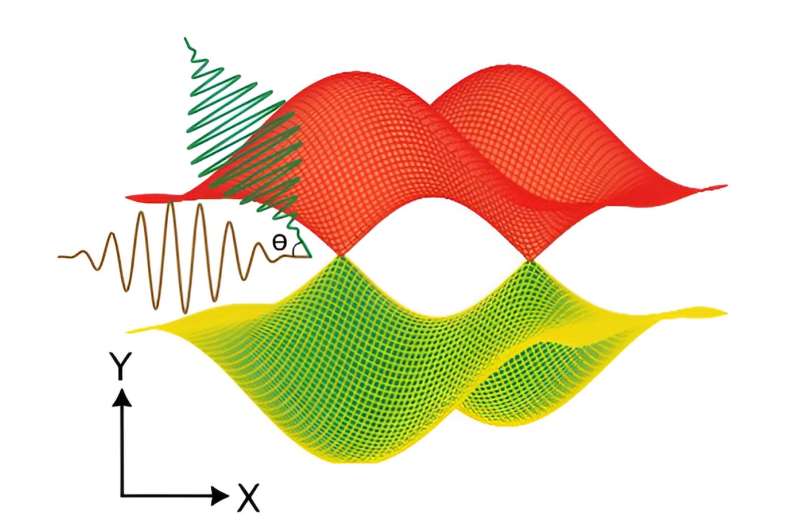This article has been reviewed according to Science X's editorial process and policies. Editors have highlighted the following attributes while ensuring the content's credibility:
fact-checked
peer-reviewed publication
proofread
A universal path for converting light into current in solids

Researchers have long wondered whether light can be efficiently converted into electricity. Realistic and efficient methods to generate electricity from light, photocurrent, has numerous potential applications in the clean conversion of energy, information processing, sensors, photodetectors and many other optoelectronic uses.
The question has motivated scientists to seek novel quantum materials. Recently, researchers from the Indian Institute of Technology (IIT) Bombay have put forward an ingenious method not only to generate photocurrent in a material-independent way, but also to tune and tailor it efficiently for widespread use.
Photocurrent generation from Weyl semimetals are a hot topic due to their topological nature. Though Weyl semimetal provide robustness to external perturbations, photocurrent has only been restricted to certain symmetry classes of the Weyl semimetals.
Recent research published in Physical Review B demonstrates that a single-color, circularly polarized light setup engenders photocurrent in a Weyl semimetal irrespective of its underlying symmetry and structural details.
The use of an intense laser pulse unlocks helicity-dependent photocurrent, which is also tunable with the ellipticity of the light. The highlighted method of photocurrent generation shows susceptibility to amplitude, phase, and helicity of circularly polarized light.
In addition, the photocurrent gradually reduces to zero when the ellipticity of the light transits from circular to linear. This led to the novelty of the method over the previous attempts using ultrashort bursts of two frequencies of light in Weyl semimetals. The earlier methods have intensity alone as a control parameter to tailor photocurrent.
Going one step further, researchers also illustrate that photocurrent can be generated using a pair of linearly polarized pulses, the easiest conceivable experimental setup in another publication in Physical Review B. Amar Bharati, the lead researcher of this work, has successfully shown that an intense light and its weaker second harmonics are sufficient to convert light into electricity efficiently.
The advantages of this novel approach offers are multifold. First, it generates a universal photocurrent in both topological and nontopological materials. Second, it can be tailored by tuning the angle between the polarization planes and the amplitude ratio of two lights. Third, it can be further tuned by introducing a time delay between two light bursts.
Prof. Gopal Dixit, also an author on both papers, says, "In the rapidly progressing fields of photodetectors and optoelectronics, a universal method to generate photocurrent adds new dimensions. On the one hand, for information processing, the generation of photocurrent at will in a simple setup is needed. On the other hand, a photodetector for intense light solves the imminent need to characterize intense light."
More information: Amar Bharti et al, Tailoring photocurrent in Weyl semimetals via intense laser irradiation, Physical Review B (2023). DOI: 10.1103/PhysRevB.108.L161113
Amar Bharti et al, Photocurrent generation in solids via linearly polarized laser, Physical Review B (2024). DOI: 10.1103/PhysRevB.109.104309
Journal information: Physical Review B
Provided by Max-Born Institut





















